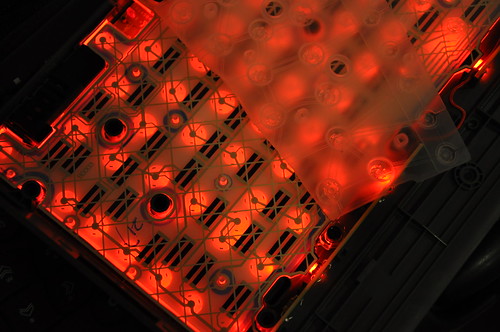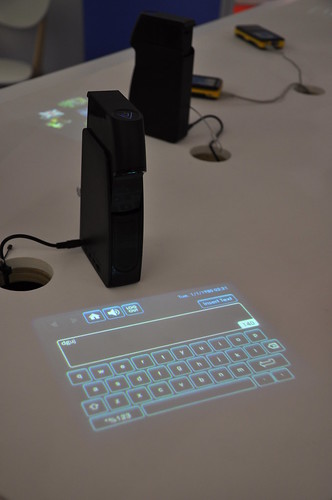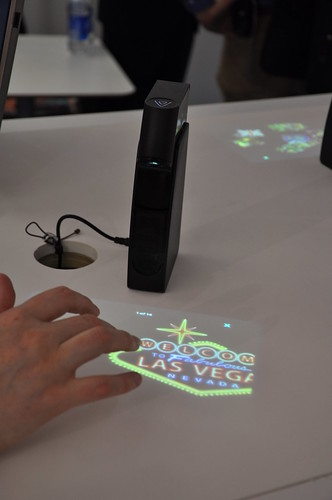Touch Me Somewhere Else For A Change


Multi-touch isn’t just for tablets. It’s soon going to be everywhere, as the underlying technologies (whether resistive, capacitive or optical) solve many complex user interface problems. Take the humble keyboard for example.
You’d think it was a simple piece of work, and something that couldn’t be made any better. However gamers and CAD users will tell you something quite different. It turns out that there’s a problem with the matrix of connections that connect each keyswitch together. Press too many at once and the keyboard controller can’t detect which keys are pressed. That’s why there’s anti-ghosting controls in your keyboard, tools that block certain key combinations from occurring. That complex combination of keys you need to finish a CAD model or to take down a gang of zombies? Sorry. It’s impossible. And what’s more annoying, different keyboards have different matrix layouts, and different key combinations locked out by anti-ghosting – even the wonderful classic IBM microswitch keyboards.
Microsoft’s new Sidewinder X4 takes a very different approach to keyboard design. Instead of the traditional matrix of switches, the keypad underlay is an array of resistive touch sensors. Touch any number of them, and the controller can determine the order in which they were pressed – using the same techniques used to work with multi-touch onscreen keyboards. Now it’s possible to handle full 10-finger key combinations. Imagine that in AutoCAD. Or in World of Warcraft.
We were able to look inside to see the printed array of resistive touch elements. They're the little black bars, and Microsoft Hardware had to do a lot of work to develop a technique for printing them on the keyboard's flexible circuit board (and still managed to keep the Sidewinder's cost under $60).
Talking to the keyboard’s designers at CES 2010, we got a picture of just how they see this type of touch sensor powered keyboard being used. A batch of prototypes had been made up and sent out to various universities, to see just what their students would come up with. The results were nothing short of spectacular. One of our favourites was an application that turned an ordinary keyboard into one for the disabled, handling multikey presses (perhaps with a tennis ball on a manipulator) and determining user intent (much like extended T9 on a modern mobile phone) to determine what’s actually being typed.
The Sidewinder wasn’t the only intriguing touch application at CES 2010.
Implementing a table-based touch system like Microsoft’s Surface is expensive, complicated and takes up a lot of space. Cambridge-based Light Blue Optics has turned touch tables inside out, with a lightweight, extremely portable touch projector.
You’ve probably seen those red laser-projected keyboards. They’re a neat idea, but not really much use when trying to deliver whole applications. Light Blue Optics have taken laser projection, made it full colour, and using a holographic lens, have simplified the process of projecting an image on any surface at any angle. The resulting Light Touch projector mixes a small computer with a projector, as well as a set of optical sensors.
Using cameras to detect hand position, the Light Touch can project all manner of interactive screens, from web browsers to games to menus. It’s surprisingly intuitive to use, and working with a touch screen on a flat surface is actually quite natural and comfortable – and like Surface it’s surprisingly social.
It's easy to imaging the Light Touch in shops, with a touch-driven catalogue, or in restaurants, projecting a dynamically generated menu.
With a hefty amount of VC funding and support from several major IT companies, we’re optimistic for Light Blue Optics’ success. And it’s always good to cheer for a British company...
--Simon


